Special Report
These Are the 12 People Who Walked on the Moon
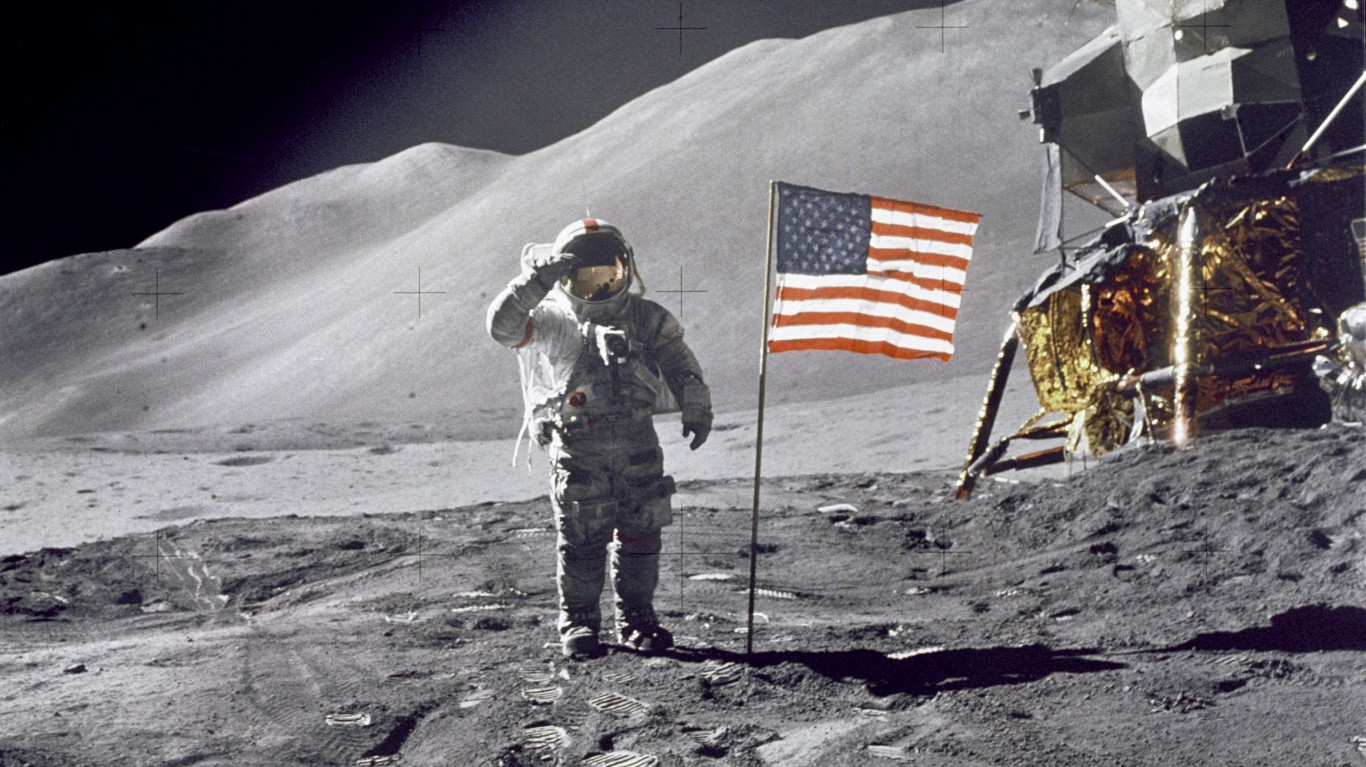
Published:
Last Updated:

On July 20, 1969, astronaut Neil Armstrong took his place in history by becoming the first person to walk on a surface that was not Earth. When Armstrong, Buzz Aldrin, and Michael Collins returned to Earth four days later, they fulfilled President John F. Kennedy’s decree made before a joint session of Congress in 1961 that “this nation should commit itself to achieving the goal, before this decade is out, of landing a man on the moon and returning him safely to the Earth.”
Armstrong and Aldrin wouldn’t be the last people to tread on the moon. Twelve people have walked on the lunar surface, making theirs one of the smallest and most prestigious fraternities on Earth. Their exploits were part of a space race that put the prestige of nations on the line — these are the most unforgettable moments in space exploration.
As the world marks the 50th anniversary of Armstrong’s historic moon walk, 24/7 Wall St. is taking one small step toward acknowledging the 12 men who are the only people to have left their footprints on the surface of another world by reviewing sources such as the NASA website for biographical information about the astronauts.
Click here to read about the 12 people who walked on the moon
All 12 moon walkers were white American males who came from nine states. Texas produced three moon walkers, and two hailed from Pennsylvania. All but one studied aeronautical or astronautical engineering. Many were military test pilots — the “Right Stuff” generation — with some flying combat missions during the Korean War and others prowling the Cold War skies over Europe.
There were only six manned missions to the moon (Apollo 13’s mission had to be aborted) and the last man to walk on the lunar surface did so in 1972. All but four of the moon walkers have passed away, including Armstrong. Aldrin, the second man to walk on the moon, continues to look to the stars, believing humankind’s future is on Mars. Evidence for water on Mars first appeared in 2000, when a NASA satellite sent back images of gullies that appeared to have been formed by flowing water. These are the reasons why scientists think there is life on other planets.
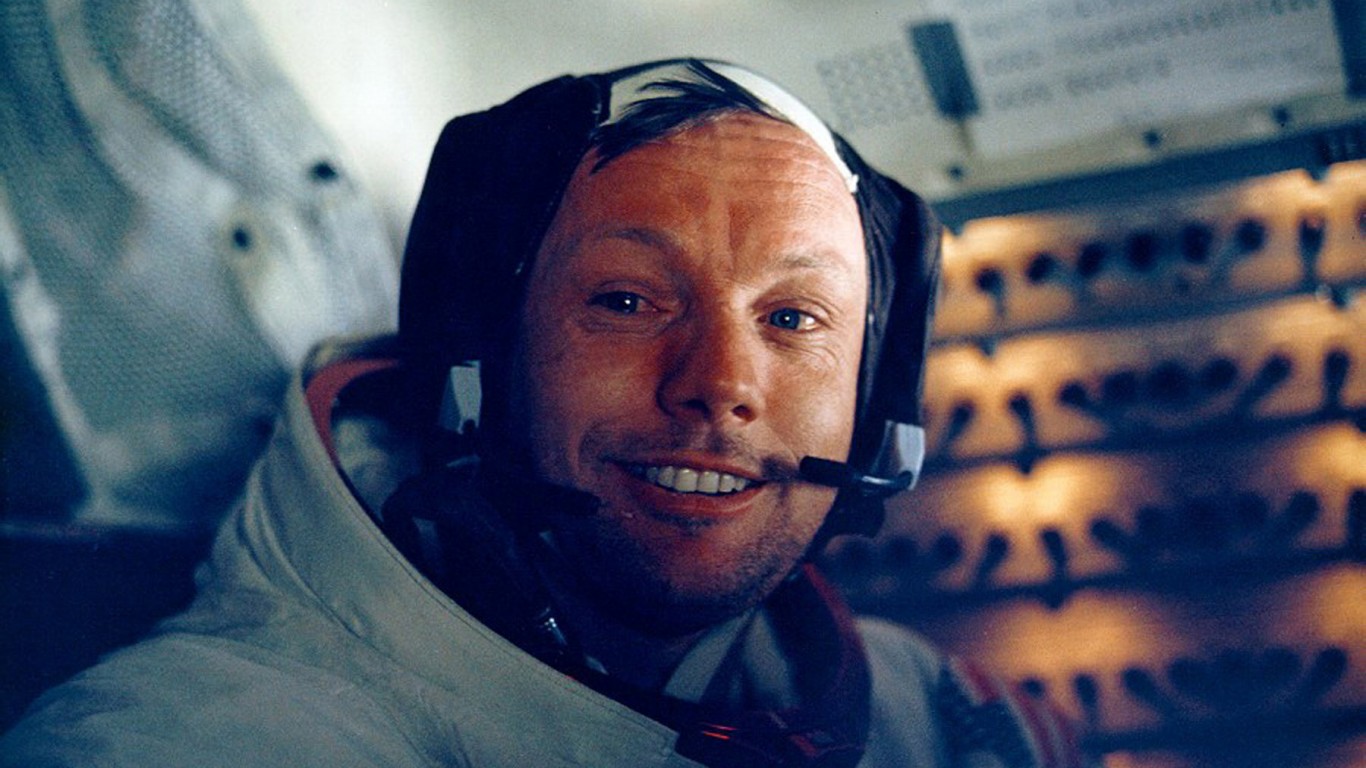
1. Neil Armstrong (1930-2012)
> Birthplace: Wapakoneta, Ohio
> Time on moon: 21 hours, 36 minutes
> Duration of moon mission: Apollo 11 (July 16-24, 1969)
> Number of space flights: 2: Gemini VIII, Apollo 11
Neil Armstrong, born on his grandparents’ farm in Wapakoneta, Ohio, entered the pantheon of American heroes by becoming the first human to walk on the moon on July 20,1969. Armstrong’s words as he stepped on the moon, “That’s one small step for man, one giant leap for mankind,” are among the most quoted of all time. The rocks Armstrong collected on the lunar surface proved invaluable in determining the age of the moon.
Armstrong was a private man who did not exploit his fame. He said after the Apollo 11 mission that he would not fly in space again. He held various jobs at NASA and taught aerospace engineering at the University of Cincinnati in the 1970s. He published his autobiography “First Man” in 2005, and a motion picture based on the book was released last year. After 13 years out of the public eye, the Smithsonian National Air and Space Museum put Armstrong’s spacesuit on display earlier this month.
[in-text-ad]

2. Edwin “Buzz” Aldrin (1930-)
> Birthplace: Montclair, New Jersey
> Time on moon: 21 hours, 36 minutes
> Duration of moon mission: Apollo 11 (July 16-24, 1969)
> Number of space flights: 2: Gemini XII, Apollo 11
Even though Edwin “Buzz” Aldrin did not achieve immortality as the first man to walk on the moon, the fact that he was second gained him everlasting fame. Aldrin walked on the moon nine minutes after Armstrong’s historic walk. Later he would receive Holy Communion while on the moon, which rankled atheists.
Aldrin had difficulty managing the attention that came after the historic trip, and over the next 15 years battled alcoholism and depression. He has written books about his experiences, including his autobiography “Return to Earth” and “Men from Earth.” In an opinion piece he wrote for the Washington Post in May, Aldrin said in order for humanity to survive, people have to migrate to Mars.
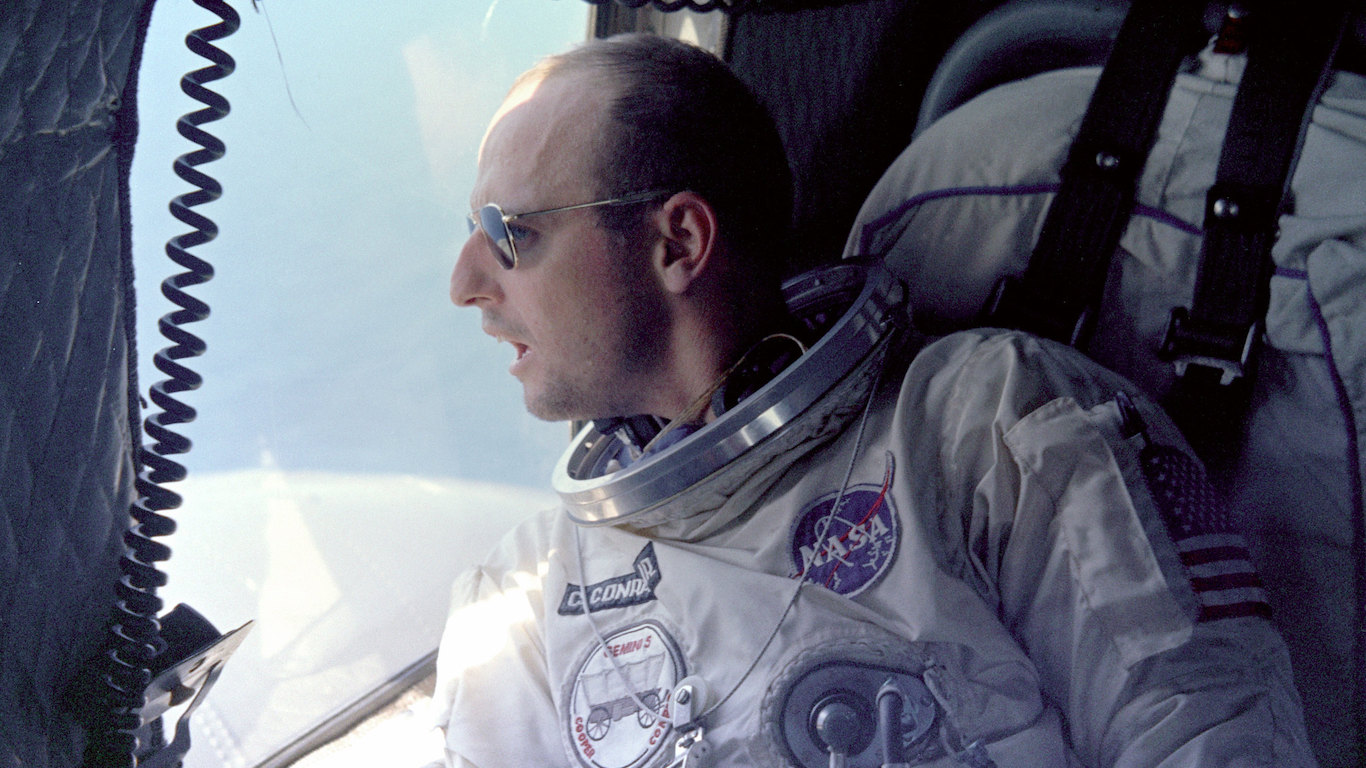
3. Charles “Pete” Conrad (1930-1999)
> Birthplace: Philadelphia, Pennsylvania
> Time on moon: 10 hours and 26 minutes
> Duration of moon mission: Apollo 12 (Nov. 14-24, 1972)
> Number of space flights: 4: Gemini V, Gemini XI, Apollo 12, Skylab II
Charles “Pete” Conrad flew four space flights, the most of any of the moon walkers except for John W. Young. By the time he served as commander of Apollo 12, Conrad, who fought to overcome dyslexia, had already flown on two Gemini missions, establishing a space endurance record of eight days in space on Gemini V, and helping to set an altitude record on Gemini XI. Conrad also served as commander of Skylab 2, the first U.S. space station.
The free-spirited Conrad enjoyed fast cars and faster planes. He made a bet with a journalist that the first words astronauts spoke on the moon were not scripted. To prove this, when he got on the moon, he said, “Whoopie! Man, that may have been a small one for Neil, but that’s a long one for me.” Conrad’s life ended tragically when he was killed in a motorcycle accident in California.
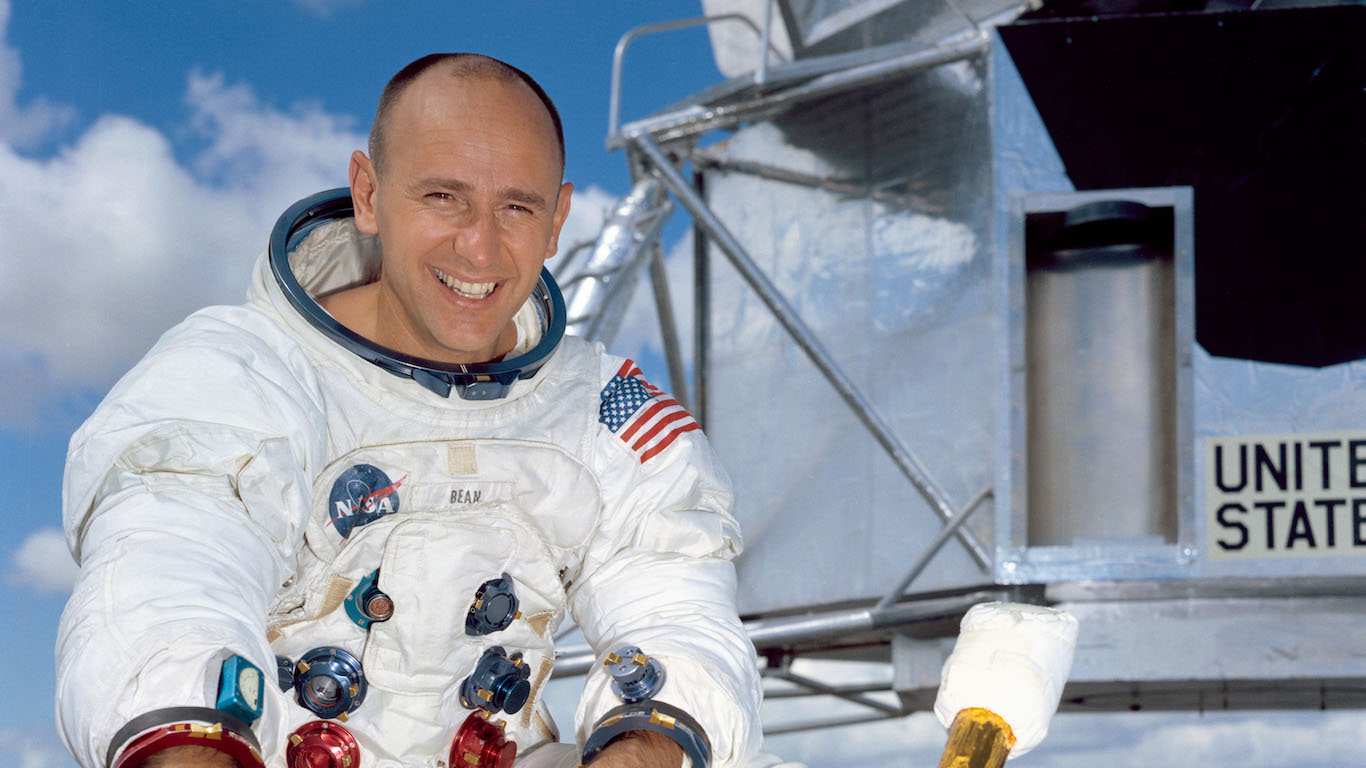
4. Alan Bean (1932-2018)
> Birthplace: Wheeler, Texas
> Time on moon: 10 hours and 26 minutes
> Duration of moon mission: Apollo 12 (Nov. 14-24, 1972)
> Number of space flights: 2: Apollo 12, Skylab II
Alan Bean was the lunar module pilot of Apollo 12, the second mission to land on the moon. Bean and fellow astronaut Pete Conrad explored the Ocean of Storms, the largest dark spot on the moon, and set up various scientific experiments. They also were the first astronauts to install a nuclear power generator on the moon. Later, Bean served as commander of Skylab 3, spending 59 days in orbit.
Bean had been painting before he flew into space, and he said he was encouraged by his fellow astronauts to capture his lunar experiences on canvas, thus making him the “first artist on another world.” He later expanded his artistic horizon by becoming a sculptor, incorporating bits of Apollo 12 and moon dust in his creations.
[in-text-ad-2]
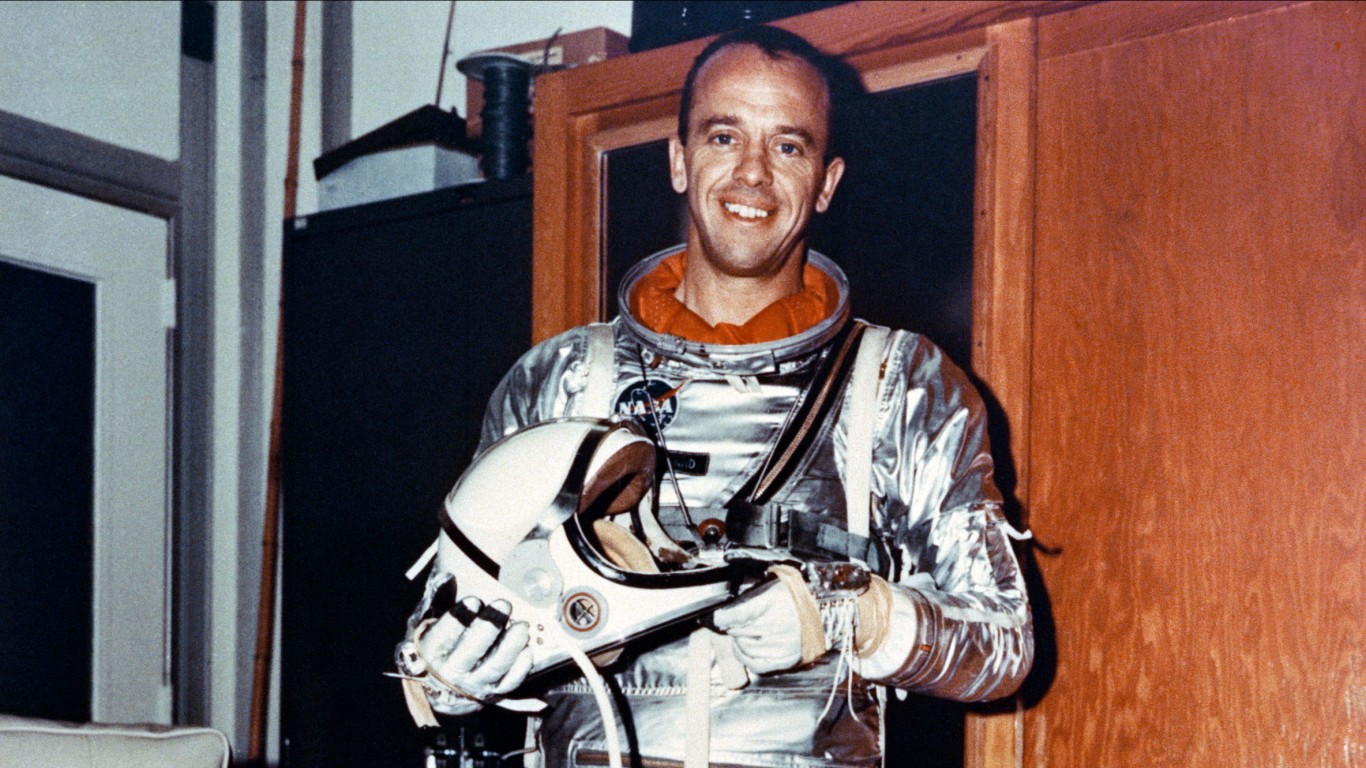
5. Alan B. Shepard Jr. (1923-1998)
> Birthplace: East Derry, New Hampshire
> Time on moon: 9 hours and 17 minutes
> Duration of moon mission: Apollo 14 (Jan. 31-Feb. 9, 1971)
> Number of space flights: 2: Freedom 7, Apollo 14
Alan B. Shepard Jr. was the oldest person to set foot on the moon, at 47 years old. As spacecraft commander for Apollo 14, he and Edgar D. Mitchell traveled over the rugged Fra Mauro region of the lunar surface, setting up scientific equipment and experiments while collecting about 100 pounds of rocks and soil. Long before his lunar experience, Shepard had already entered the history books.
The World War II veteran and admiral was part of group of seven Mercury astronauts chosen by NASA in 1959. He became the first American in space two years later, flying aboard Freedom 7. Shepard would gain immortality for his quote expressing frustration at the delays for launching Freedom 7, saying “Why don’t you fix your little problem and light this candle?”

6. Edgar D. Mitchell (1930-2016)
> Birthplace: Hereford, Texas
> Time on moon: 9 hours and 17 minutes
> Duration of moon mission: Apollo 14 (Jan. 31-Feb. 9, 1971)
> Number of space flights: 1: Apollo 14
Edgar D. Mitchell was the sixth man to walk on the moon, serving as lunar module pilot for Apollo 14. While on the moon, Mitchell and spacecraft commander Alan Shepard traversed the hilly Fra Mauro area of the lunar surface, setting up and activating scientific equipment and experiments, while collecting about 100 pounds of rocks and soil.
Even before his moon journey, Mitchell had distinguished himself at NASA for helping to develop procedures to safely return the spacecraft and the crew from the disabled Apollo 13 mission in 1970, after the spaceship had been damaged by an oxygen tank explosion. For his work, Mitchell received the Presidential Medal of Freedom.
After he left NASA, Mitchell founded the Institute of Noetic Sciences, a foundation created to explore the nature of consciousness. He also co-founded the Association of Space Explorers, an organization of those who share the wonder of space travel. Mitchell is the author of “Psychic Exploration: A Challenge for Science” and “The Way of the Explorer.”
[in-text-ad]

7. David R. Scott (1932-)
> Birthplace: San Antonio, Texas
> Time on moon: 18 hours and 35 minutes
> Duration of moon mission: Apollo 15 (July 26-Aug. 7, 1971)
> Number of space flights: 3: Gemini VIII, Apollo 9, Apollo 15
David R. Scott was the first astronaut to drive on the moon. He was the spacecraft commander for Apollo 15, and he and lunar module pilot James B. Irwin were the first astronauts to probe the moon’s Hadley Rille and Apennine Mountain regions. While on the moon, Scott proved the gravitational theory put forth by Galileo — that all things should fall at the same rate, regardless of how heavy they are — by dropping a hammer and a feather simultaneously and showing that both objects hit the lunar surface at the same time. Scott first flew into space in 1966 on Gemini VIII with Neil Armstrong. That mission that was noteworthy as the first successful docking of two vehicles in space.
Three years after the Gemini mission, Scott served as command module pilot for Apollo 9, whose mission yielded vital information about operational performance of lunar module propulsion and life-support systems.
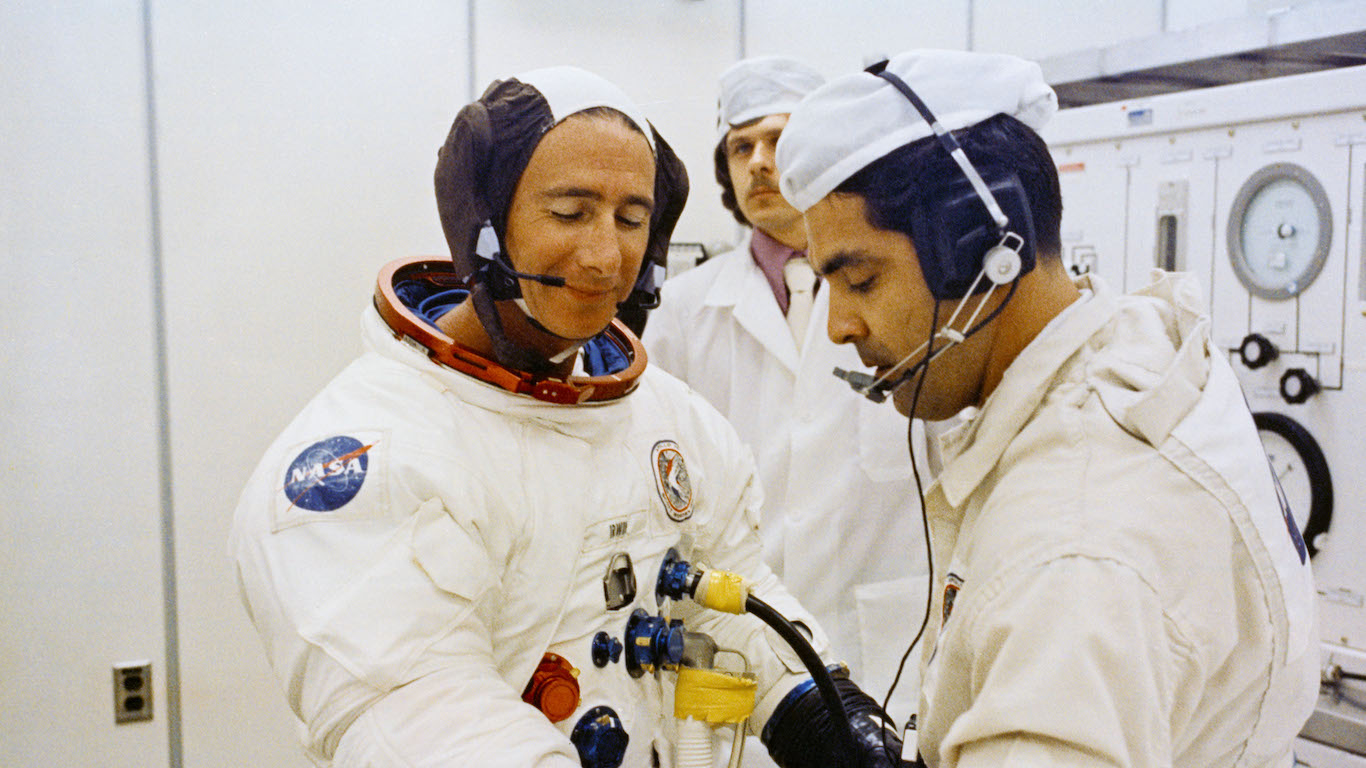
8. James B. Irwin (1930-1991)
> Birthplace: Pittsburgh, Pennsylvania
> Time on moon: 18 hours and 35 minutes
> Duration of moon mission: Apollo 15 (July 26-Aug. 7, 1971)
> Number of space flights: 1: Apollo 15
Air Force colonel James B. Irwin was the lunar module pilot for Apollo 15. He and spacecraft commander David R. Scott were the first astronauts to explore the moon’s Hadley Rille and Apennine Mountain regions. Their lunar module, dubbed the “Falcon,” probed the lunar surface for more than 66 hours. Their activities were televised in color using a camera that was operated from the mission control center in Houston.
Irwin resigned from NASA and the Air Force in 1972 and formed a religious organization, the High Flight Foundation.
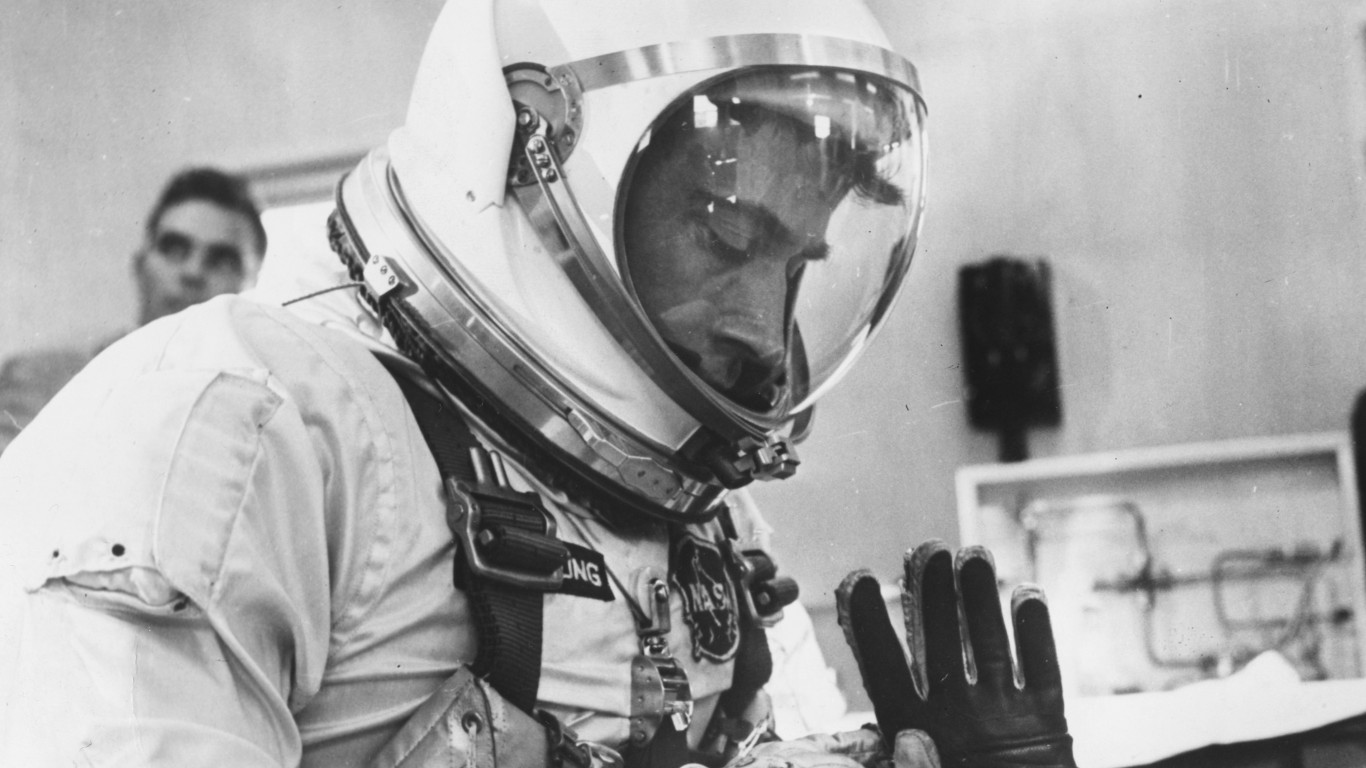
9. John W. Young (1930-2018)
> Birthplace: San Francisco, California
> Time on moon: 20 hours and 15 minutes
> Duration of moon mission: Apollo 16 (April 16-27, 1972)
> Number of space flights: 6: Gemini III, Gemini X, Apollo 10, Apollo 16, STS-1 (Space shuttle), STS-9 (Space shuttle)
John W. Young, spacecraft commander of Apollo 16, had the most space flights of any moon walker with six. On Apollo 16, he and Charles M. Duke drove over 16 miles on three separate trips on the rugged terrain of the lunar highlands and gathered 213 pounds of rocks.
Young had already distinguished himself with two trips on Gemini missions and as the command module pilot of Apollo 10. He would burnish his astronaut credentials as the space flight commander of the first space shuttle in 1981 and flew a second shuttle mission two years later. All totaled, Young logged 835 hours in space.
[in-text-ad-2]
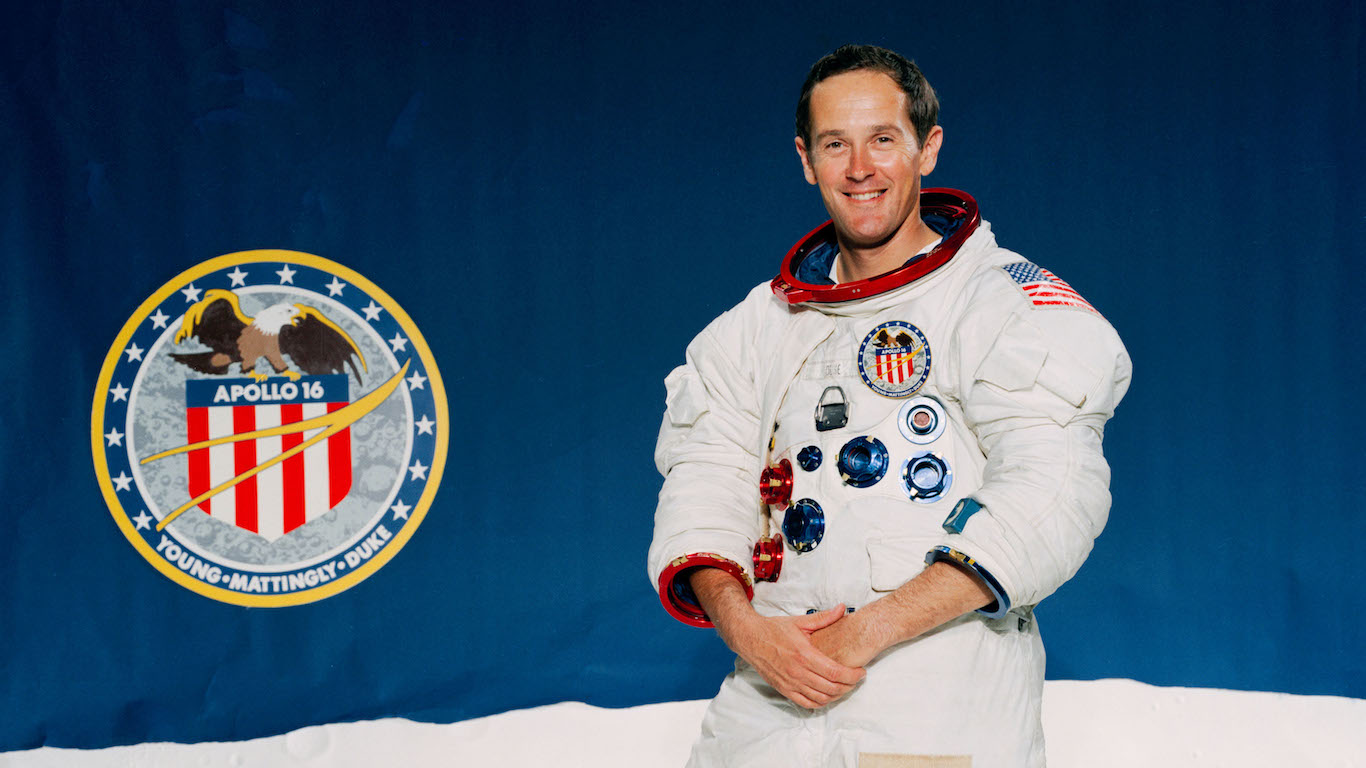
10. Charles M. Duke (1935-)
> Birthplace: Charlotte, North Carolina
> Time on moon: 20 hours and 15 minutes
> Duration of moon mission: Apollo 16 (April 16-27, 1972)
> Number of space flights: 1: Apollo 16
Charles M. Duke was the lunar module pilot on Apollo 16 and one of just four moon walkers still with us. He and spacecraft commander John W. Young led the first scientific expedition to the rugged Descartes region of the moon, the roughest surface the astronauts had yet encountered on the lunar surface, where they did surveys, sampled materials, and inspected surface features. The two astronauts logged 20 hours and 15 minutes in extravehicular activities and collected about 213 pounds of rock and soil samples.
After his time at NASA, Duke started a successful investment business. He then devoted his energies to his Christian ministry.
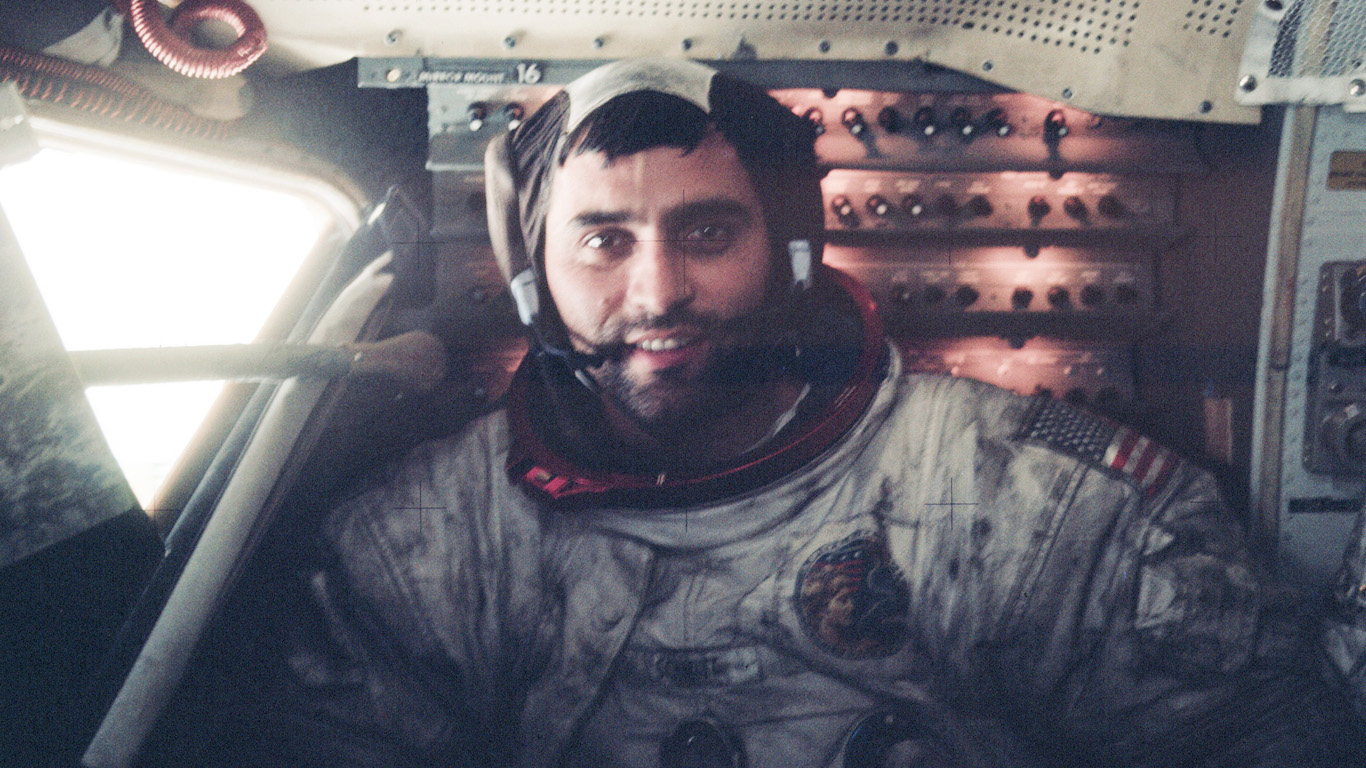
11. Harrison H. Schmitt (1935-)
> Birthplace: Santa Rita, New Mexico
> Time on moon: 22 hours, 4 minutes
> Duration of moon mission: Apollo 17 (Dec. 7-19, 1972)
> Number of space flights: 1: Apollo 17
Armed with a doctorate in geology from Harvard University, Harrison H. Schmitt worked at the U.S. Geological Survey’s Astrogeology Center before he joined NASA and helped the U.S. space program map the lunar surface. Prior to his own flight to the moon, Schmitt advised NASA astronauts during their geological explorations on the moon. Apollo 17 was Schmitt’s only trip into space, and the mission set several records, including the longest duration for lunar surface extravehicular activities (22 hours, 4 minutes).
After his days as an astronaut, Schmitt entered politics, was elected senator from New Mexico in 1976, and served one term. Schmitt has written extensively about policy issues facing the United States, the history of space flight, and climate change. He is the author of the book “Return to the Moon.”
[in-text-ad]
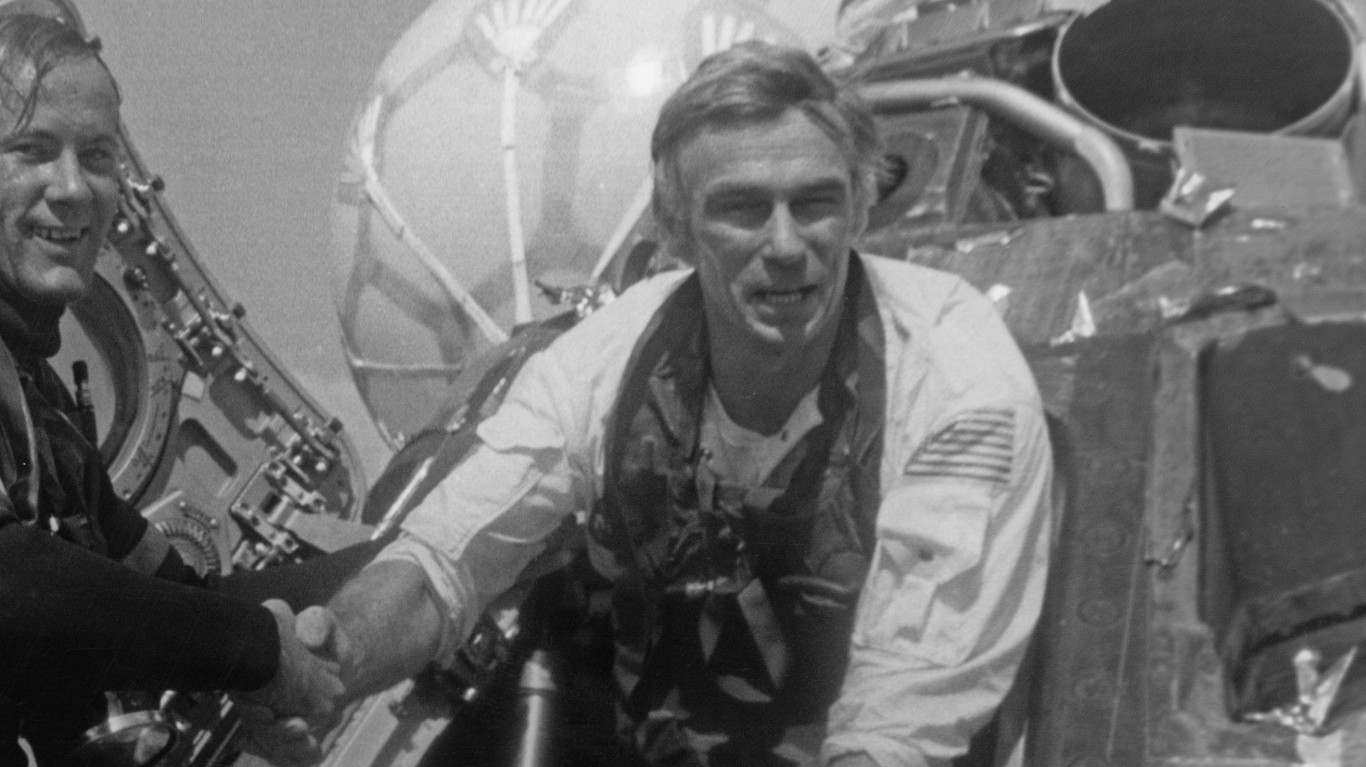
12. Eugene Cernan (1934-2017)
> Birthplace: Chicago, Illinois
> Time on moon: 22 hours 6 minutes
> Duration of moon mission: Apollo 17 (Dec. 7-19, 1972)
> Number of space flights: 3: Gemini IX, Apollo 10, Apollo 17
Eugene Cernan was the last person to walk on the moon. The final words he spoke on the moon were, “We leave as we came and, God willing, as we shall return, with peace and hope for all mankind.” Cernan, a staunch advocate of space exploration, was disappointed that he was the last man on the moon.
Prior to his moon walk, Cernan had been the second American to have walked in space during the Gemini IX mission in 1966. He was the lunar module pilot for Apollo 10 that flew into space just two months before Apollo 11. Cernan is one of just two men to have flown to the moon on two separate trips.
The thought of burdening your family with a financial disaster is most Americans’ nightmare. However, recent studies show that over 100 million Americans still don’t have proper life insurance in the event they pass away.
Life insurance can bring peace of mind – ensuring your loved ones are safeguarded against unforeseen expenses and debts. With premiums often lower than expected and a variety of plans tailored to different life stages and health conditions, securing a policy is more accessible than ever.
A quick, no-obligation quote can provide valuable insight into what’s available and what might best suit your family’s needs. Life insurance is a simple step you can take today to help secure peace of mind for your loved ones tomorrow.
Click here to learn how to get a quote in just a few minutes.
Thank you for reading! Have some feedback for us?
Contact the 24/7 Wall St. editorial team.